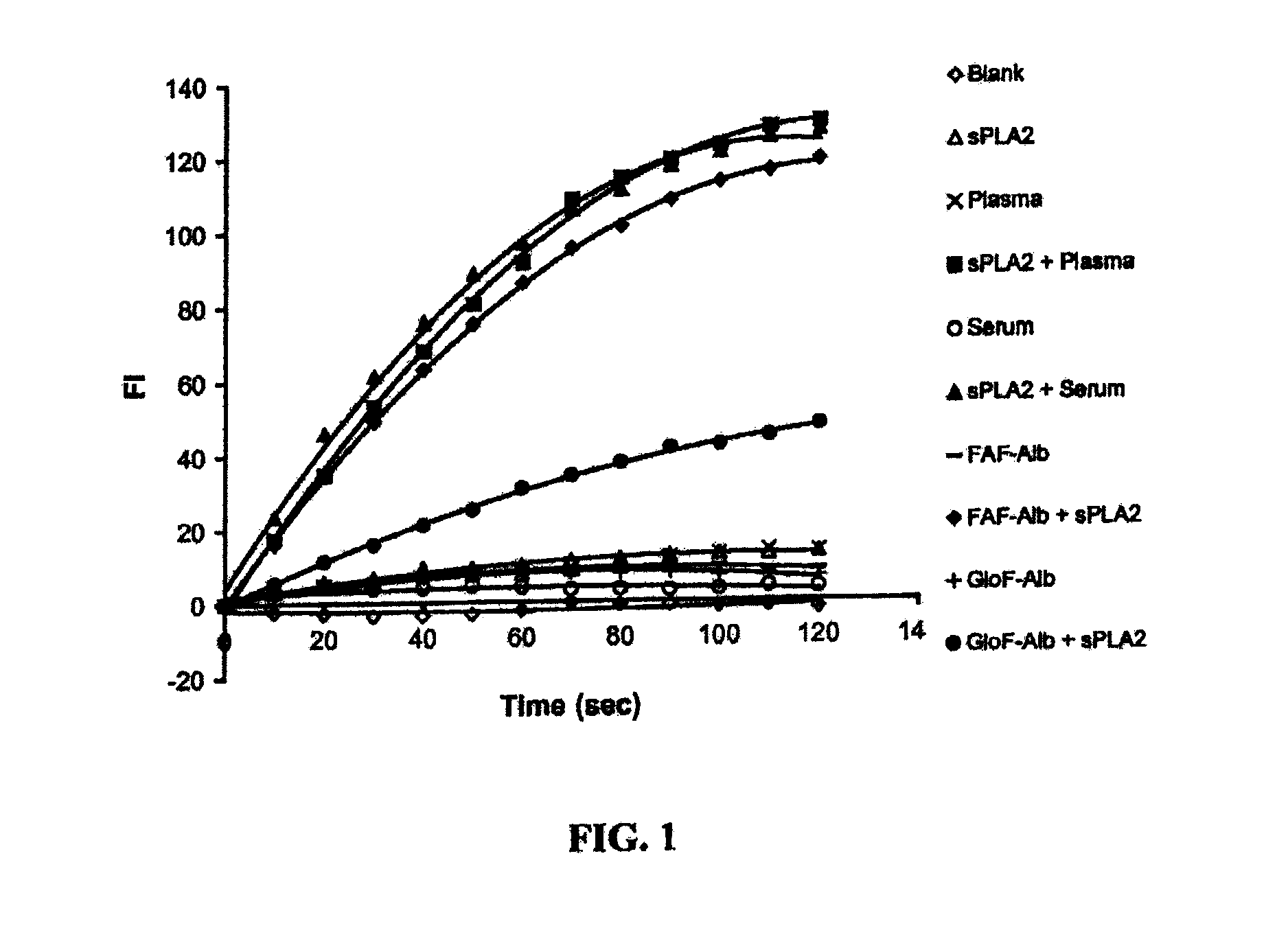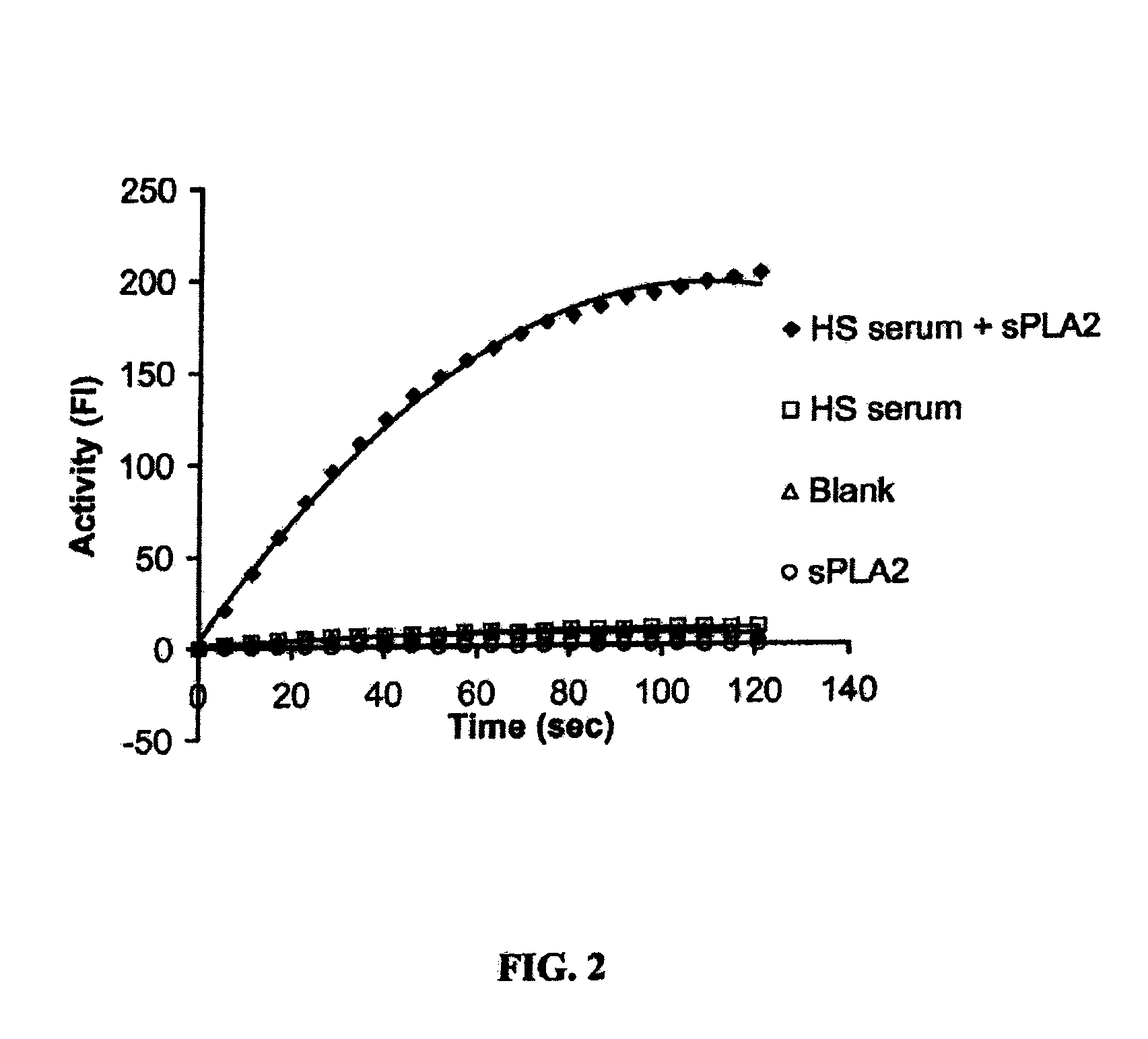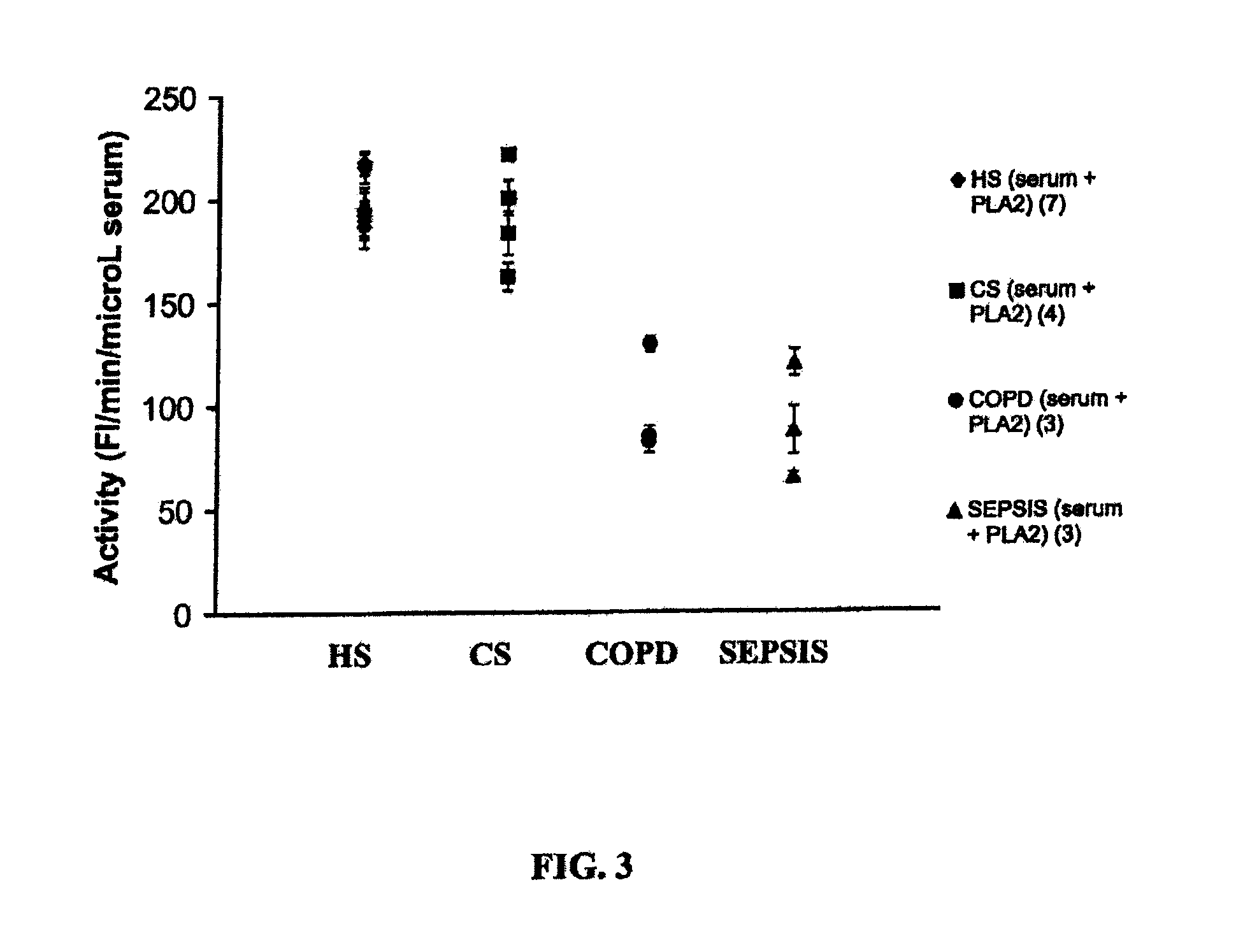Method For Measuring Activity of a Specific Fraction of Albumin
- Summary
- Abstract
- Description
- Claims
- Application Information
AI Technical Summary
Benefits of technology
Problems solved by technology
Method used
Image
Examples
example 1
Measuring SFA
[0186]Preparing PLA2. Porcine pancreatic sPLA2 (EC3.1.1.4) was purchased from Sigma Chemical (St. Louis, Mo.). The working solution of sPLA2 was freshly prepared by diluting about 10 units of PLA2 to 1 ml with 0.01 M Tris-HCl, pH 7.4 and kept at 4° C. prior to use.
[0187]SFA activity assay. Unless otherwise specified, the assay described in this example was used to conduct the experiments presented in this example. Liposome substrates were prepared by mixing C1-BODIPY C12 FA with 50% DOPC and 50% PG in a ratio of 0.016 mg: 1 mg: 1 mg (for 1 ml liposomes) in chloroform (C1-BODIPY C12 FA: 4,4-difluoro-5-methyl-4-bora-3a,4a-diaza-s-indacene-3-dodecanoic acid; DOPC: dioleoyl phosphotidylcholine; and PG: phosphatidylglycerol). After chloroform was evaporated to dryness under a stream of nitrogen, lipids were suspended in 1.5 ml sucrose / Tris buffer (0.25 M sucrose, 50 mM Tris-HCl, 0.02% sodium azide), pH 7.4. The suspension was stirred occasionally with vortex within 30 min. T...
example 2
Measuring Phospholipase Activity
[0209]Bronchoalveolar lavage fluid. Samples of bronchoalveolar lavage fluid (BALF) were obtained from normal volunteers and patients with CF as described previously (41). The fluid was filtered through two layers of a sterile gauze into a 50 ml tube, then centrifuged at 1,200 rpm for 10 min at 4° C. using a Beckman Model TJ-6 centrifuge. The cell-free BALF was stored at −70° C. before use. The cell pellets were washed with about 35 ml incomplete Hanks balanced salt solution (HBSS) and spun at 1,000 rpm at 4° C. for 10 min. The pellets were suspended in 1-2 ml HBSS. Total and viable cells were counted by mixing an aliquot of cell suspension and trypan blue solution using a hemacytometer. An amount of 15,000 to 20,000 cells was taken for each cytospin slide preparation for morphological analyses using Diff-Quik Stain Set (Dade Behring AG, Dudingen, Switzerland). The rest of the cell suspension was spun at 1,000 rpm and the supernatant was discarded. The...
example 3
Effects of BALF on Pancreatic PLA2 Activity
[0227]Continuous Fluorescent Assay. The present invention provides a simple and sensitive continuous fluorescent assay of PLA2 activity using fluorescently labeled unilamellar liposomes as substrate. The unilamellar liposomes were made of dioleoyl phosphatidylcholine (DOPC), phosphatidylglycerol (PG) and fluorescently labeled 1,2-bis-(4,4-difluoro-5,7-dimethyl-4-bora-3a,4a-diaza-s-indacene-3-undecanoyl)-sn-glycero-3-phosphocholine (Bis-BODIPY FL C11-PC) (Molecular Probes, Eugene, Oreg.) in a molar ratio of 10:10:0.14 as described previously (42). The PLA2 assay was conducted in a single quartz cuvette in which it contained 0.01 M Tris-HCl buffer, pH 7.4, 10 mM CaCl2, 27.3 nmol liposomes phospholipids, and 10 ng porcine pancreatic PLA2. The fluorescence intensity was recorded every 10 sec for 2 min at 21° C. The fluorescence intensity was measured using a Perkin-Elmer Luminescence Spectrometer LS50B equipped with FL WinLab™ software (Perkin-...
PUM
 Login to View More
Login to View More Abstract
Description
Claims
Application Information
 Login to View More
Login to View More - R&D
- Intellectual Property
- Life Sciences
- Materials
- Tech Scout
- Unparalleled Data Quality
- Higher Quality Content
- 60% Fewer Hallucinations
Browse by: Latest US Patents, China's latest patents, Technical Efficacy Thesaurus, Application Domain, Technology Topic, Popular Technical Reports.
© 2025 PatSnap. All rights reserved.Legal|Privacy policy|Modern Slavery Act Transparency Statement|Sitemap|About US| Contact US: help@patsnap.com



